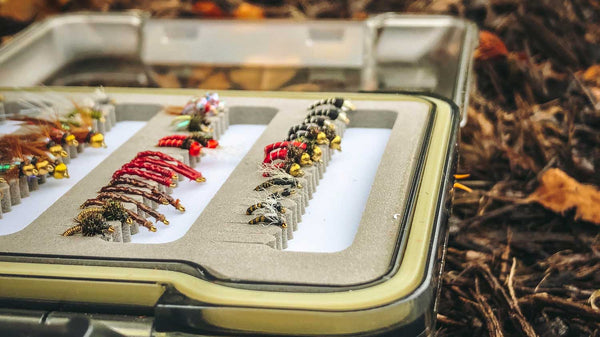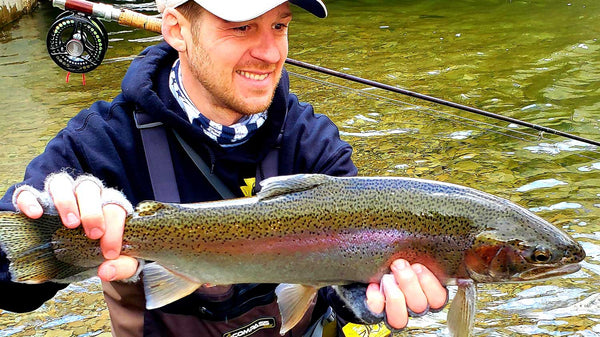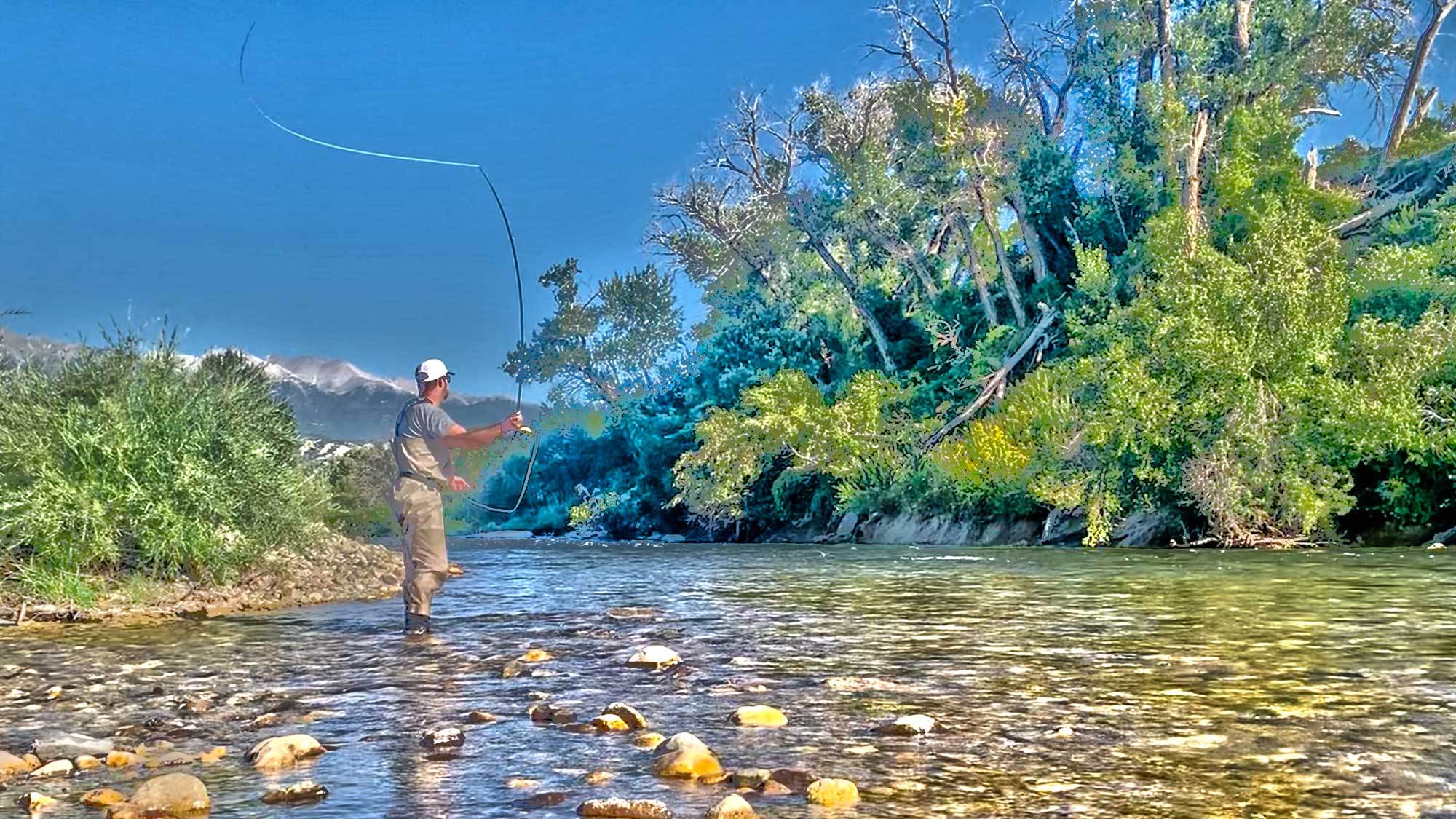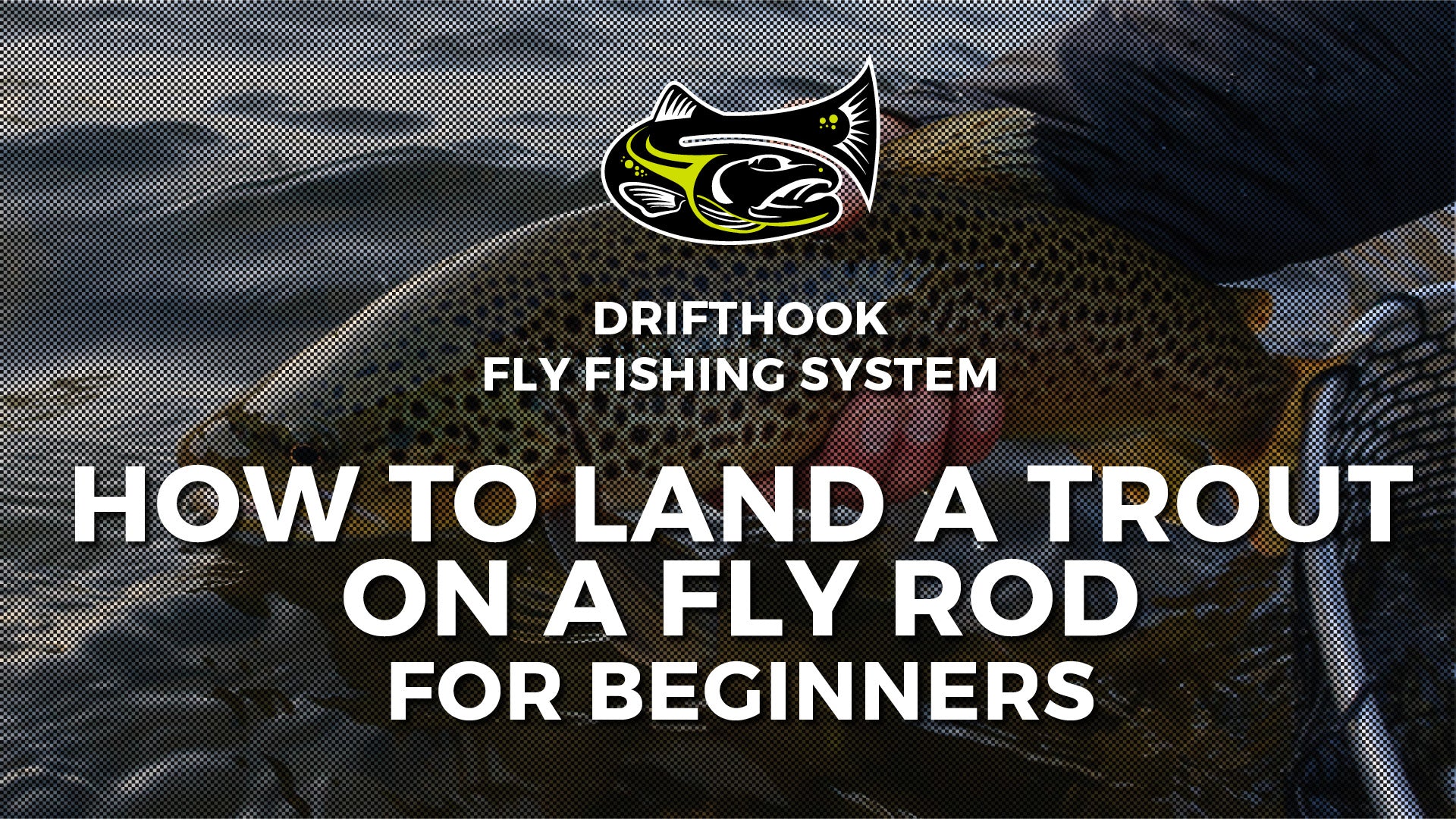
Whether you consider it a sport, a pastime, or something in the middle, fly fishing is, for many people, a fantastic way to spend your time. If you love being outdoors and you are keen to get out there even more, then getting into a sport like fly fishing could be the way to go. But first, you will need to know what lies ahead: what equipment to get, where to go fishing, and how to be successful at catching. If you are a complete beginner to fly fishing, then this article is for you.

In this article, we will dive in the detailed specifics of what exactly fly fishing is, how you can get started in it, what kind of equipment you are going to need and how you can be sure that you are going to be successful in the act of fly fishing itself. At the end of the article, you will have a solid grasp on what you need to do, and you should be ready to hit the ground running in the world of fly fishing.
If you are looking to become the world's next best fly fisher, perhaps even break a World Record or two, you'll need the starting information in this article. Successful fly fishing depends on numerous factors, such as the right conditions for optimal success, the appropriate water temperature for active trout, and proper preparation of your gear and fly selection for the day you hit the water.

You might even find that getting a good sleep the night before has a drastic effect on your success. Let's take a look at all of this now in detail, so you can soon become a fly fishing expert.
What Is Fly Fishing?
First up, it might be helpful to determine just what fly fishing is, so that you can get to grips with this fascinating and immediately inviting sport much more successfully. Many people have heard of fly fishing without ever having the faintest clue what it is, and that is often true even for those people who feel that they would like to try their hand at the sport themselves. If that applies to you, then you might find it useful and exciting to learn more about what this sport is and perhaps even how it all started.

Fly fishing is an ancient method of angling, which was developed primarily as a means of catching salmon and trout. Of course, these days, it is a method used to catch many types of fish, including bass, pike, and carp - but at first, it was primarily those salmonids. This method of angling tends to use a lightweight artificial fly to catch fish. This fly is cast using a rod, a reel, and a specialized line. One of the main differences to be found in fly fishing as compared to other kinds of fishing is the way that the line is thrown, not the fly itself - this is something that we will look at in some detail later on in this article.

This kind of fishing can be done in both fresh and saltwater, meaning that you can catch many different types of fish with it. There is a range of techniques to do with fly fishing. They can vary across the world.

A Little History
It might be helpful and exciting to take a look briefly into some of the history surrounding fly fishing. The first recorded use of an artificial fly was by the Roman Claudius Aelianus in the 2nd century. It was also used as a method of fishing in Japan in later times. In Japan, it was known as Tenkara, which is making a resurgence. Another central part of the world where this kind of fishing took hold early on was in Scotland, notably in the highlands where the Highlanders would try to catch fish from the lochs.

After the English Civil War, fly fishing took a sudden turn and became much more popular practically overnight. It was around this time that many books started to become written on the subject of fly fishing, and we might say this was when the practice began in the Western world. Then, throughout the 18th century, advanced rods, lines, and flies were created, and the modern world of fly fishing began to come out.

Since then, the reel has been modernized to a high degree. Throughout the 19th century, there were some significant improvements in the way that the real was designed with sealed drags systems and saltwater protective coatings, which fly fishers still benefit from today.

In the 19th century, fly fishing became part of a much larger movement of the general increase of leisure activities across the UK and the US, so it grew in popularity more at that time than at any other. However, participation in fly fishing peaked in the 1920s, especially in the US, and notably in Maine and Vermont.
Much of this had to do with Hemingway's accounts, for instance, in the book The Sun Also Rises. Finally, the baby boomers revived increased popularity in fly fishing in the '50s, and this has pretty much stayed with us to this day.
Why Go, Fly Fishing?
All that history is well and good, but you might well be wondering why you would want to go fly fishing in the first place. If you are reading this article, then we can assume that you are at least somewhat interested in the sport, but you might not yet be convinced as to what is so enjoyable or beneficial about it.
Most people who go fly fishing find that it is incredibly relaxing, for one, and in many ways, it is one of the most relaxing days out you can ever have. Many people who imagine fishing but have never done it will assume that it is quite dull, but the opposite is the case.

The drama of catching fish and reeling them in is incredibly exciting and deeply satisfying in a manner that can't fully be described. Many people find that the level of connection they feel to the natural world when they go fly fishing is what makes it especially enjoyable. It is undoubtedly true that you will feel like a natural hunter when you are fly fishing, especially when you are successful. Plus, it's just good for you to go and spend as much time as you can in the outdoors, and this is a beautiful way to make that happen.
If you are looking for a break from the modern world, and you also want to learn a new skill that is both an exciting pursuit and sport, and genuinely useful as a survival skill, then fly fishing might just be the perfect thing for you to do.
How Hard Is Fly Fishing To Learn?
Many people who would otherwise go to start fly fishing might well be put off by the fact that it might seem challenging to learn. We're not going to lie to you - there is undoubtedly something of a learning curve that you are going to have to think about here, and that is something that you are going to want to prepare for as best as you can.
But anyone can learn to fly fish, and the main thing that you will need is the right level of determination and the willingness to give it a try. As long as you have that, there is no real reason why you won't be able to learn this, just like any other pursuit or sport.
The main thing is learning the basic technique, which can take a while to learn, and longer to master. However, the learning and mastering of this technique are both the fun of the whole sport, so that is just something that you are going to look forward to if you get into fly fishing. Plus, we now live in an age of so much information that you will find there are plenty of ways to learn more as you try to improve your skills. 
Whether that's reading articles like this one, watching videos on YouTube, or speaking to successful and experienced anglers, you will find that it is always possible to learn some more about how to fly fish.
Bear in mind too that there are plenty of fly fishing events around the world, including a number of free ones, and that these can be a great way to learn more about the basics of fly fishing in a way that will help you to improve your skills significantly. So keep an eye out for some of those if you want to get ahead as you try to learn this exciting and unique sport.
If you ever have wondered where we like to go fly fishing check out our article on the top 25 places to go fly fishing in the US here.
The Basic Method of Fly Fishing
Now that we have given a detailed background into the sport itself, its history, and why you might want to get into it, it might be time to start delving into the nitty-gritty of the game itself and get to grips with the specific practicalities of fly fishing.
Most importantly of all, we are first going to take a look at the primary method of fly fishing. While a lot of this might not seem to make sense at first reading, it's the kind of thing that will make more and more sense once you have tried
it for yourself.
The primary method of fly fishing is as follows. As with any kind of angling, there is a process of casting involved, which means to throw something out as a means of returning it later - hopefully with a catch!
However, unlike other angling methods - where you are often casting a lure - in fly fishing, you are casting the line itself. While other anglers might be relying on the weight of the lure to pull line from the reel during the cast, the fly fishing angler is looking to cast out the line in such a manner that the fly itself is carried - so it is kind of the opposite to those other kinds of fishing.
There are many kinds of a cast that you might adopt when you go fly fishing. The most common is the forward cast, which is the one that you might have in your mind's eye when you imagine someone casting a line. The fly goes into the air, back over the shoulder until the line is almost straightened out, and then propelled forward into the water using the forearm. Done correctly, this will hopefully mean that the fly is put forward a good deal into the water, which is what you are generally going for when you are casting a line.
Other casts might come in handy at different times, such as the roll cast, the single- or double haul, the tuck cast, and the side- or curve-cast. However, for a beginner, the forward cast is probably all that you need to know for now. And it is the one that you are likely going to use the most until you have developed your skills a bit further.
One part of casting that tends to trick the beginner is the attempt to drop the fly in the water in such a way that it appears like an actual fly.
It has to look as natural as possible, while still having the necessary force and balance to be propelled far. This is a real balancing act, and it is this fundamental process that forms much of the beginner's essential practice in casting a line. A common mistake of the beginner is to point their rod where they want the fly to end up.
While that might seem logical, what you need to do is to speed up the hand in a continual build-up movement, and then abruptly stop it, after which action the fly will come to rest at the desired spot.
As well as this basic method, there are a few other specific methods designed for certain conditions that you can find yourself in. One such method is known as Spey casting - named after its origin of River Spey in Scotland, where the high banks don't allow for the normal casting of a line. Spey casting is like a giant roll cast and requires a special Spey rod to do it.

Don't get overwhelmed with the numerous casting techniques out there as the goal of any form of cast is to get your fly to the desired target.
Fly Fishing Techniques
The basic method of casting a line is, as you might imagine, really only a part of the process. There are a range of other techniques that you also need to consider and learn about if you are going to be able to fly fish more successfully. All of these are the kinds of things that you pick up along the way by watching and learning from others. But it is useful for the beginner to get a sense of what kind of basic techniques there are to be used on different occasions.
If you are fishing in cold water, for instance, you will often need to wade out to the right casting spot. That in itself can prove to be challenging, and you are usually playing a game of balancing safety with finding just the right angle. It is for this reason that you will often need waders - something we'll look at in the next section. Having those is an essential part of keeping yourself safe - the primary concern at all times while fly fishing.
Still, in other conditions, you might need to take a canoe or similar vessel out to deeper waters to catch trout, for instance. It is always a good idea to make sure that you do this with someone else, primarily as a beginner, to ensure your safety.
What Equipment Will You Need?
Now that we know a little about the basic process and methods of fly fishing, it is a good idea to take a look into what kind of equipment you are going to need to get started. At first, it might seem as though there is so much of this that you don't know where to begin or are not sure that you are going to be able to afford it all. But keep in mind that you do not need all of this, in all reality you just need a fly rod and flies.
Some of the basic equipment that the beginner fly fish needs are:
Fly Rod
You won't get far in fly fishing without a rod. Choosing a rod is not as easy as a beginner. The most important concern is to match the line weight that you are going to need. As a general rule of thumb, you want 0 to 2 for trout and panfish; 3 to 5 for bigger trout and small bass; 6 and 7 for tougher wind conditions and bigger flies; 8 to 10 for bigger fish still like salmon; and 11 to 14 for the most significant saltwater conditions and species.
Fly Fishing Reel
As well as the rod, you’ll need the reel that holds the line. The main point here is that the reel weight has to be balanced with the rod weight.
Line. Of course, you need a line that you are going to cast out too. Weight Forward (WF) lines work well for most beginners, but beyond that, you might want to ask at your store as you are choosing a line.
Fly Fishing Backing, Leader & Tippet
Backing is a line reserve, which can prove very important for the beginner struggling with larger fish. It's the first line to come out of the reel, followed by the line itself and then the leader. This is a transparent monofilament which keeps the fly line from being seen by the fish. The length of the leader can be changed by adding tippet - another material added to the line.
Fly Fishing Flies
You're not going to get far in fly fishing without flies! If like most beginners, you are starting out going for small trout, you might want to go for nymphs, dries and steamers firstly. Check out our great selection of fly fishing kits from beginner to advance fly fisherman here
Hat and Sunglasses
You are going to have to protect yourself from the sun, and a hat is essential if you are out in it all day.
Wading Gear.
As we mentioned earlier, wading gear is often necessary when you need to try and get out to find the perfect spot in freshwater.
Other accessories like a landing net or polarized glasses can often be useful but are not necessarily vital for the beginner.
Getting Into Fly Fishing: Some Tips For Beginners
Now that you are hopefully all stocked up with what you need to get going, it might be a good idea for us to look at some of the beginner tips that can be helpful to bear in mind along the way. With these in mind, you are going to have a much better chance of success - but remember to learn as much as possible in real-life situations from experienced anglers. Nonetheless, these tips should help.
- Take it easy. You are going to find it difficult at first, and you need to be patient and open to the experience.
- Start with short and simple casts, so that you can get a feel for the line and the method of casting. Again, take your time.
- It is worth spending a little more on some decent quality equipment, especially if you are sure you are going to carry on with this sport for a long time.
- Avoid scaring fish - try to be stealthy, and you will likely get a better catch ratio.
- Learn as much as you can about the names of fish, the types of water, their conditions, and so on.
- Join a club to learn more and benefit from the wisdom of others.
- Find a free fly fishing event, of which there are bound to be a number in your area.

The Best Water Temperatures For Fly Fishing
Different fish have different optimal temperatures, and it's good to be aware of them all. For a standard trout, you are looking at around 56-65 degrees Fahrenheit. For salmon, it's more like 54 degrees. And for bass and pike, you want to find water that is 63-65 degrees.

Finding Fly Fishing Spots
A big part of the whole process is learning how to find excellent fly fishing spots, and that is something that can prove very difficult indeed. However, as long as you bear a few basics in mind, you should find that you can work this out much more quickly.
In general, look for the right temperature (see above), a good amount of privacy, oxygen levels in the water, and avoid fast currents. Also, consider the time of day, and the local area you are in. A little geographical knowledge goes a long way.
If you are keen to get into fly fishing, then hopefully this article has persuaded you to do so. The most important thing is that you find a local club and speak to some real people about this fantastic sport.

About the Author
Matthew Bernhardt, a third-generation Coloradan, grew up at the forefront of the state’s fly-fishing revolution, enjoying time on the water, side by side with experienced guides and lifelong anglers.
By combining his passion for fly-fishing with input from other experienced fly-fishers and guides and his fine arts degree from Colorado State University, Matthew spent five years carefully developing the Drifthook Fly Fishing System, built to help every angler catch more trout.
When he’s not spending time with his wonderful family, you’ll find him out on the water catching MONSTER trout, and he anxiously looks forward to the day when his kids are old enough to join him there.





